-
#656 – From Beyond (1986)
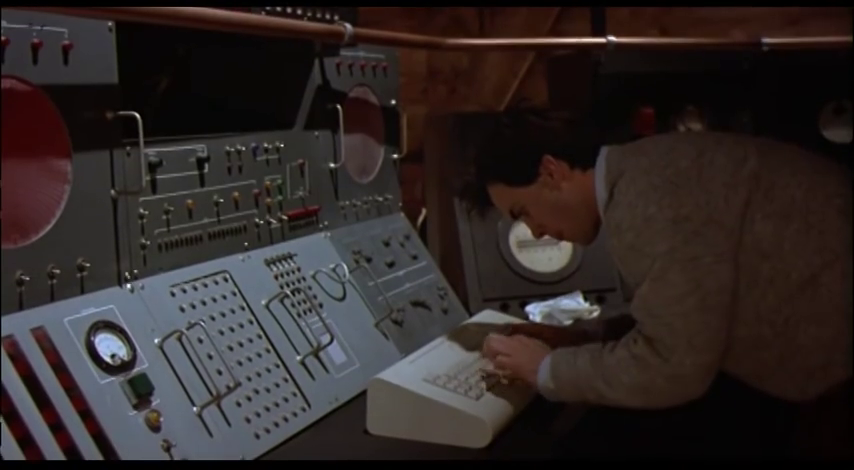
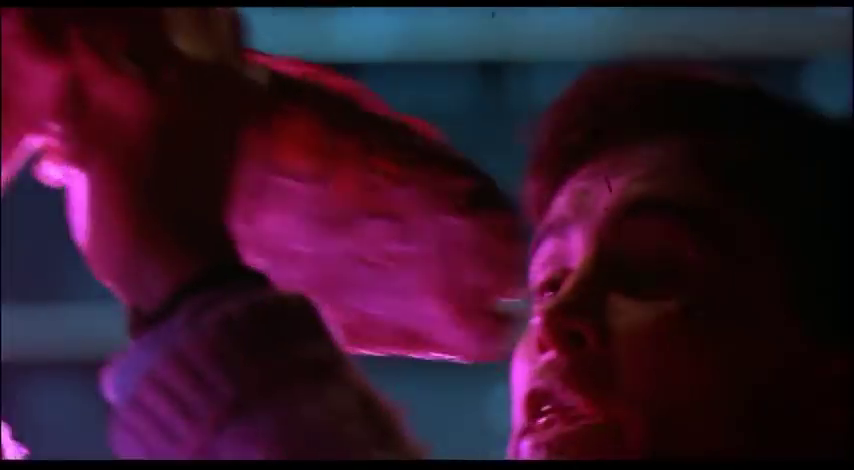
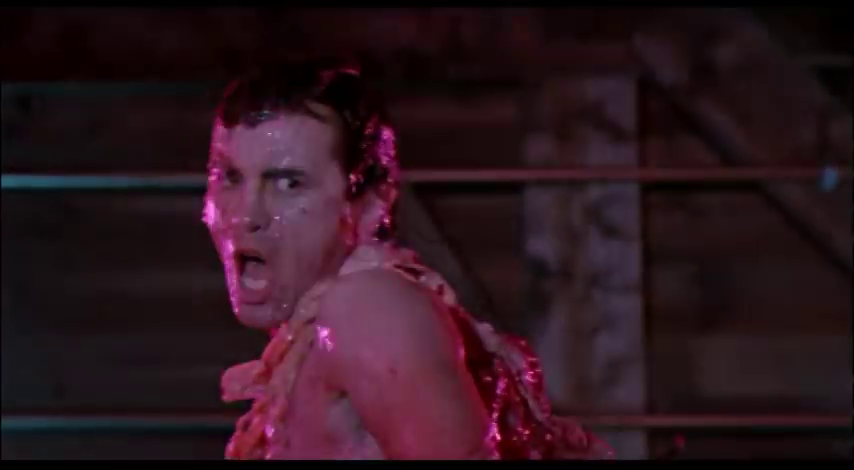
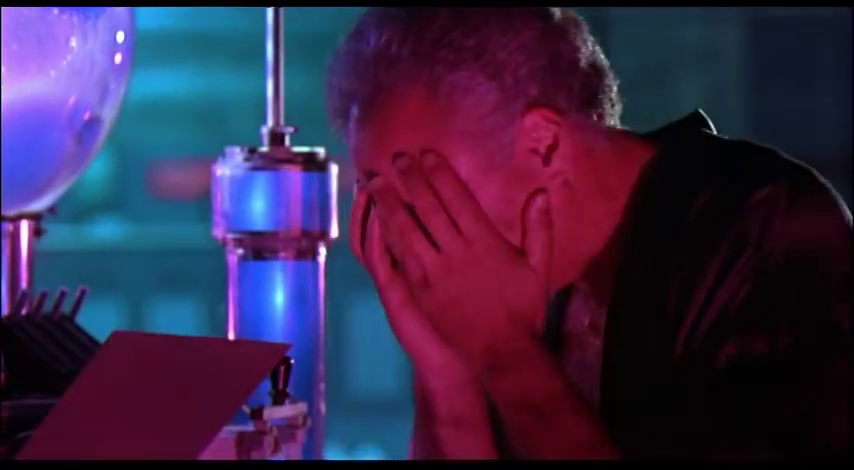
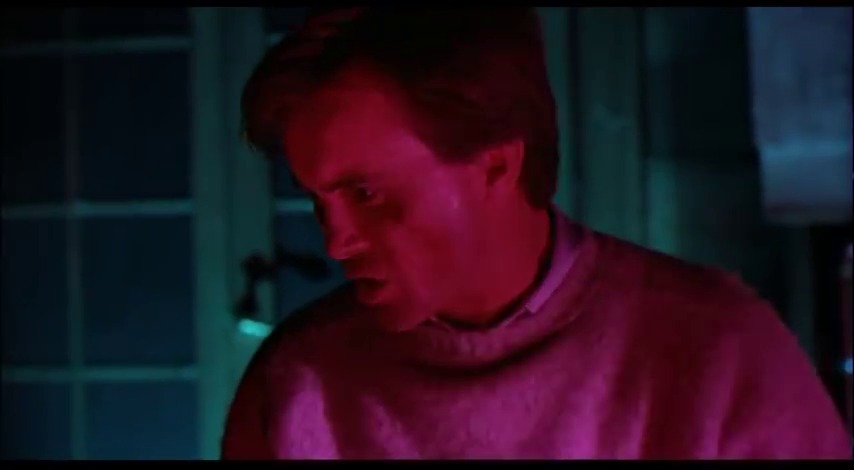
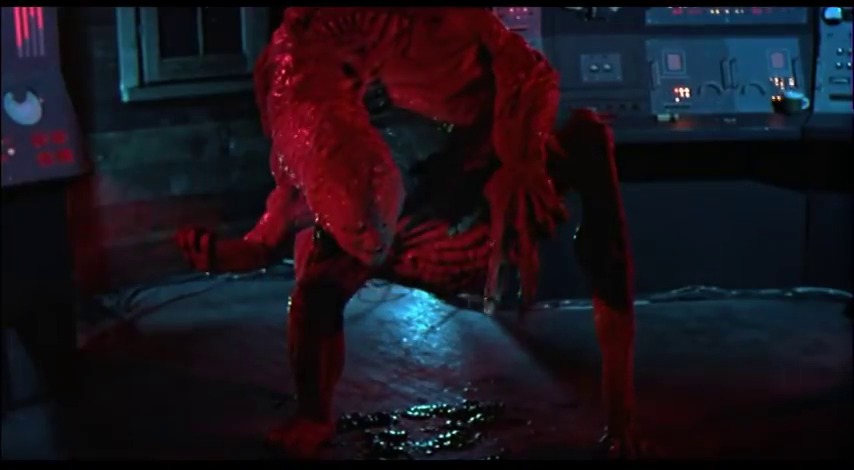
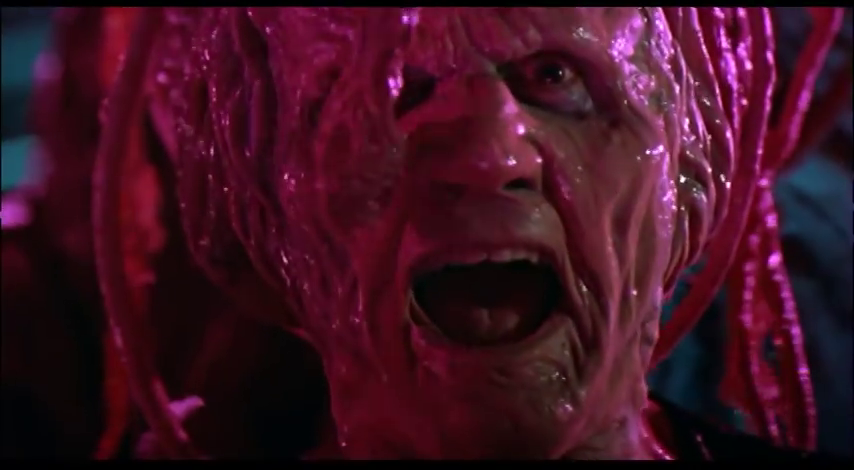
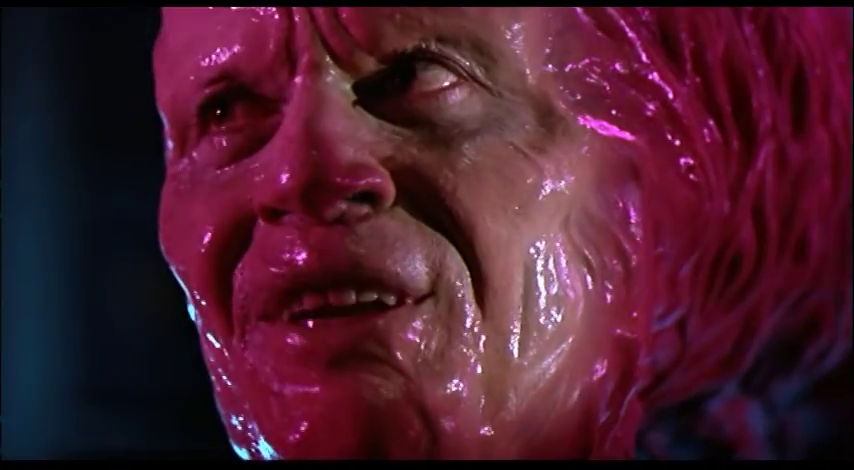
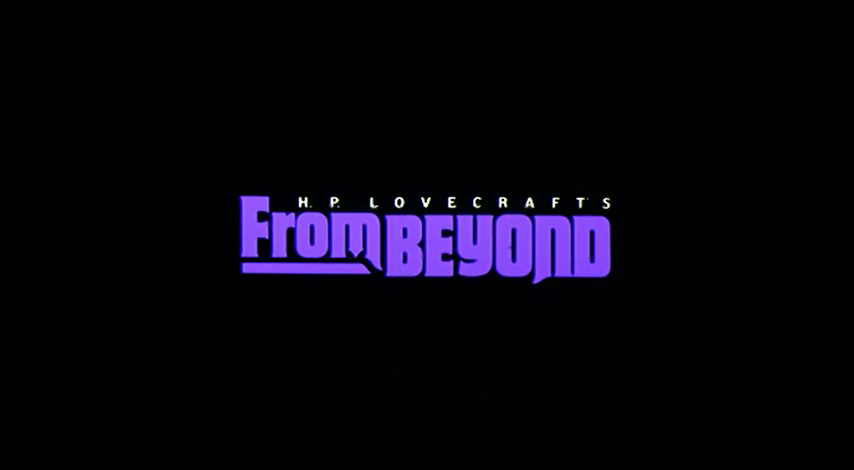
From Beyond (1986)
Film review #656
Director: Stuart Gordon
SYNOPSIS: Two scientists have developed a machine that allows access to a new dimension of reality beyond normal perceptions. testing it on himself, Dr. Edward Pretorius is exposed to a world beyond imagination, and becomes addicted to the experience. When the machine explodes and Pretorius seemingly dies, his assistant, Crawford Tillinghast, is arrested for murder. Seeking an answer to what truly happened, psychologist Dr. Katherine McMichaels returns to the scene to see whether Tillinghast’s wild claims are true…
THOUGHTS/ANALYSIS: From Beyond is a 1986 horror film based on H.P. Lovecraft’s story of the same name. two scientists invent a machine called the resonator that provides access to a dimension beyond human perception, when one of them is driven mad by the pleasures and sensations he experiences from beyond, the machine explodes and Pretorius is seemingly killed, his assistant, Crawford Tillinghast is arrested and committed to a psychiatric ward. Psychologist Dr. Katherine McMichaels attempts to get to the bottom of what happened, and whether Crawford is telling the truth about the events, by returning to the laboratory with him and recreating the experiments. What follows is a bit of a threadbare story, as the characters fumble about with the machine a bit and try to understand what it does. The real focus of this film is the body horror, and the gruesome special effects that increase in intensity and complexity as the film progresses. Make no mistake, this film is just an indulgence in sex, special effects, and the slimiest, twisted body horror that could be gotten away with. It’s weird, it’s over-the-top, and it’s exactly what it needs to be.
Lovecraft’s stories are notoriously difficult to adapt, owing to a rich lore and otherworldliness that is tough to bring to the screen. From Beyond takes a very non-pretentious approach and, as mentioned, focuses on body horror to showcase a realm beyond human experience. There’s definitely great effort gone into getting the practical effects looking as gross and as visceral as possible. Sure, it still looks like a low-budget film, but the aesthetic is still arresting, and shots never linger long enough for you to nitpick the details, which is smart. Honestly, for what it is, I think this is a pretty good film for cheap shlock: it doesn’t try to be something it isn’t, and still manages to pull off something memorable and creepy. Honestly worth a look if you’re into these types of films, but not much depth or content for a wider audience to grasp onto.
-
#614 – Star Slammer (1986)
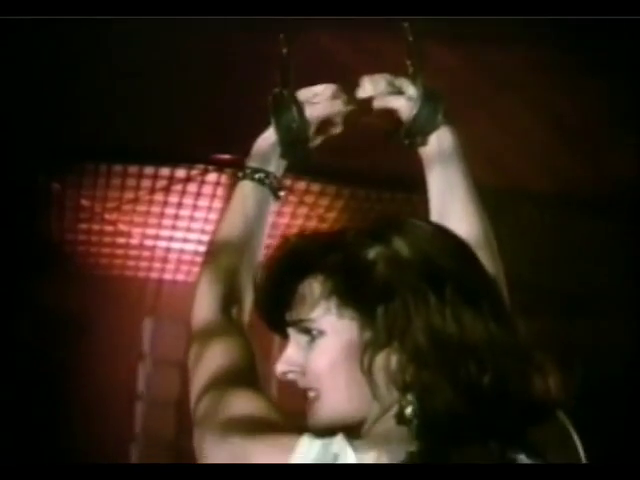
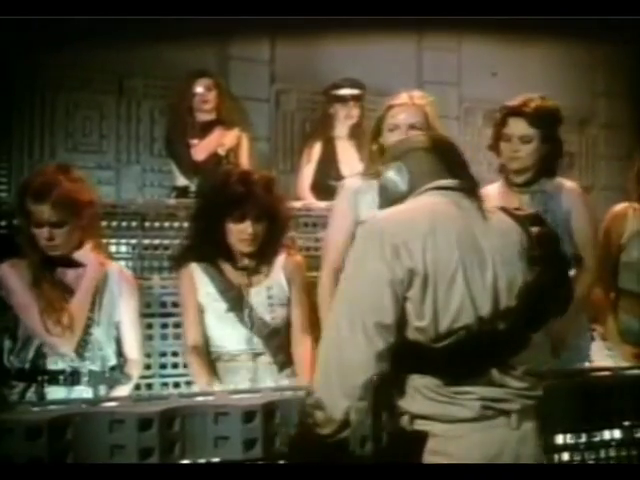
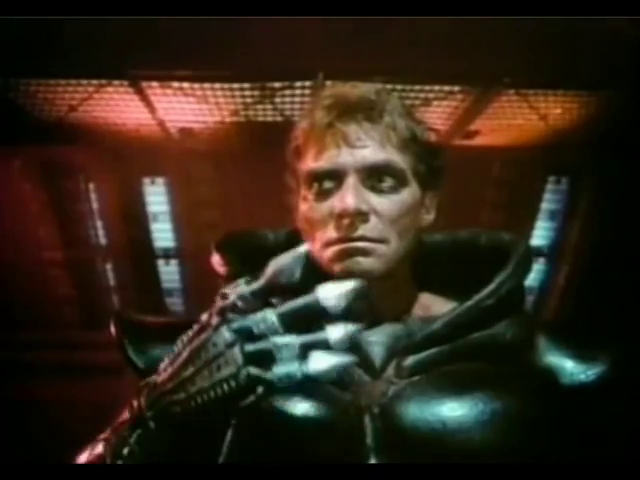
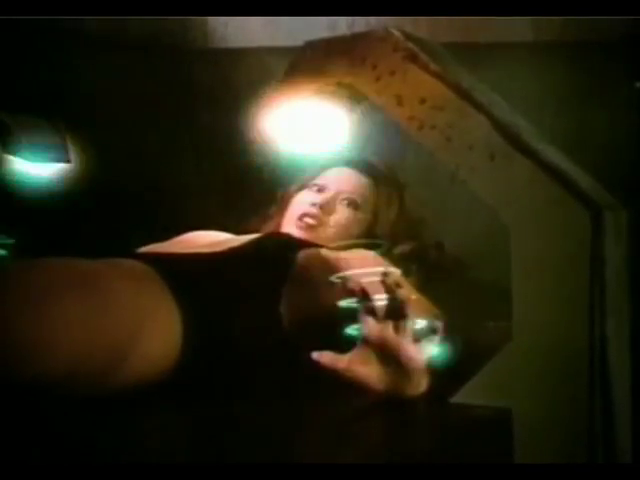
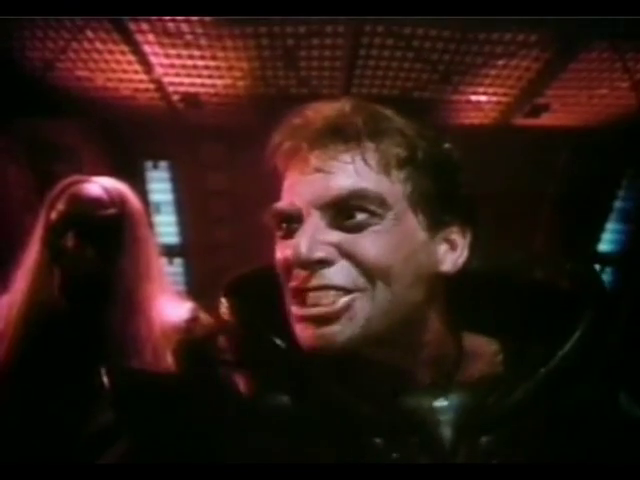

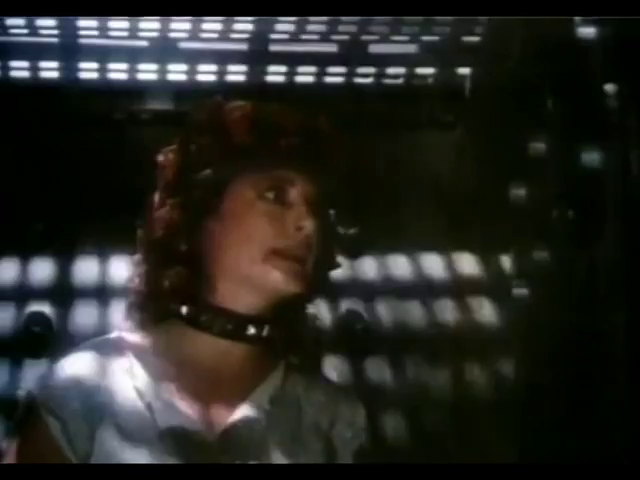
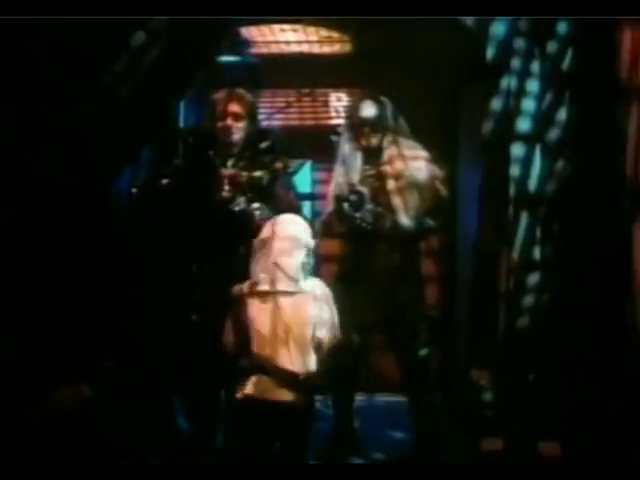
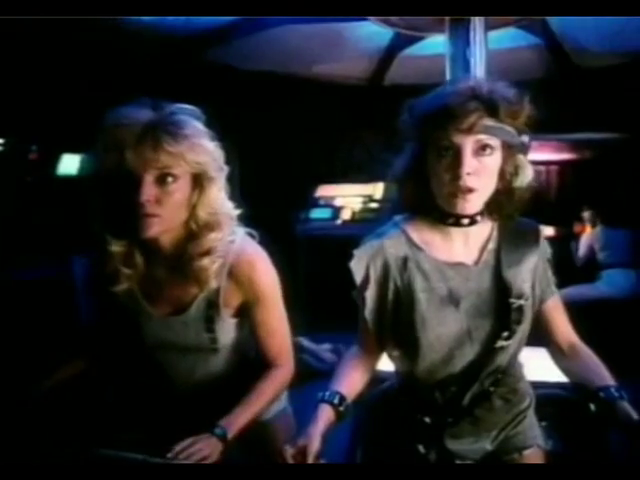
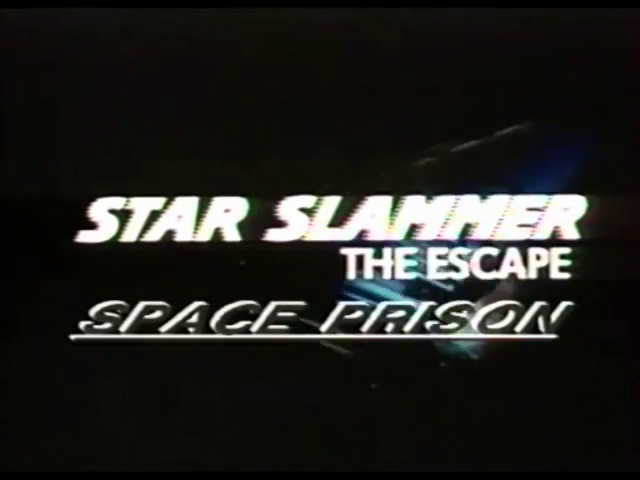
Star Slammer (1986)
Film review #614
Director: Fred Olen Ray
SYNOPSIS: Taura, a freelance miner working on the planet Arous, is arrested after helping the locals stand up against Captain Bantor and his crew, who are attempting to stop the uprising. Taura is arrested and sentenced to be imprisoned aboard a space prison ship. there, she must survive the warden and the inmates to try and escape…
THOUGHTS/ANALYSIS: Star Slammer (Also known as The Adventures of Taura, Prison Ship, Star Slammer: The Escape, or any combination thereof) is a 1986 sci-fi film. The plot centres around Taura, a freelance miner who gets caught up defending the inhabitants of the planet Arous from Captain Bantor and his minions, who are there to quell an uprising on the planet. After burning Bantor’s hand in a volcanic acid plume, she is arrested and sentenced to prison on board a space ship. Once there, Taura must survive the warden, as well as the other inmates, and find her way home. It should be no surprise to learn that this film is mostly just about showing off scantily-clad women fighting each other; but it is what it is, and it doesn’t really try to be anything else. The plot is threadbare and has little to latch on to, but at least tries to fill in the gap with the aforementioned half-clothed women. There is a clear lack of pretension in the film and its direction: it knows what it is , and it proceeds to run with it as far as its menial budget will allow.
The characters aren’t all too interesting: Taura is a fairly standard lead, and the rest of the inmates have a bit of personality, but nothing special. The most notable performance for me was the Warden, played by Marya Grant, who delivers such an exaggerated and over-the-top performance that you cannot help but take notice. The film also ropes in veteran movie star Aldo Ray for a a small part, which was apparently mostly used to show funders to back the project.
Filmed over the course of three days, the film is restricted to the opening being shot outdoors, presumable somewhere in the California hills, and the rest on the prison ship on set. However, the film can mostly get away with this, given that a prison ship is a fairly compact and small setting. Despite the production constraints, the film still manages to accomplish a lot more than other films would have with the same budget (and probably more): the sets themselves have a decent amount of detail and authenticity, and the practical effects aren’t terrible. It’s difficult to be too harsh on the film for this reason: it has a self-awareness, and it feels like some effort has gone into it, and at least some of the actors are trying. The story could definitely have used refining, as its mostly forgettable, but it never loses a self-awareness of its own limitations. One of the big drawbacks is that the film doesn’t seem to want to veer to much into the ‘women prison’ softcore scenario, so there’s only two topless shots and implied sexual scenes, which is fine, but without going too far in the genre, it has an empty space where the more lewd stuff should be. Overall, Star Slammer is trashy sci-fi that could definitely be a lot worse than it is, and has some funny moments, but some weaker elements definitely drag it down; ultimately though, you should never lose sight of the films self-awareness regarding its own limits and what it is trying to be.
-
#576 – Eagle Island (1986)
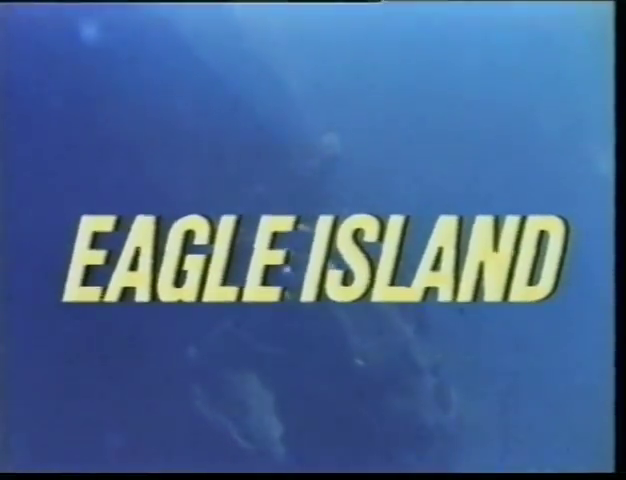
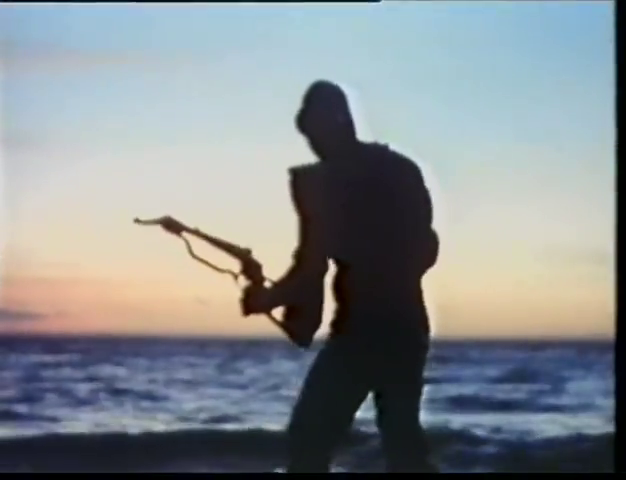
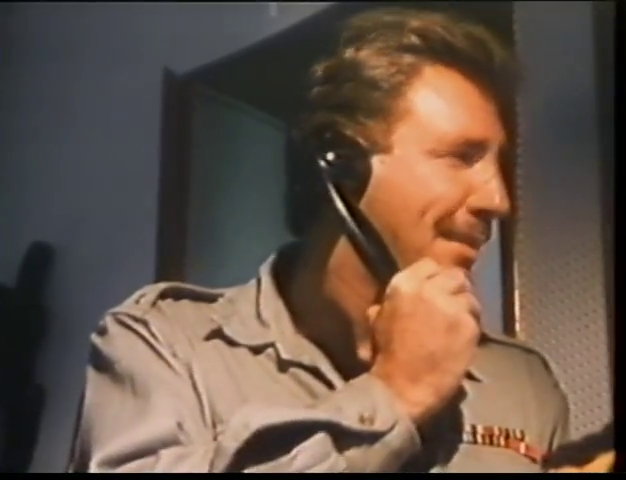
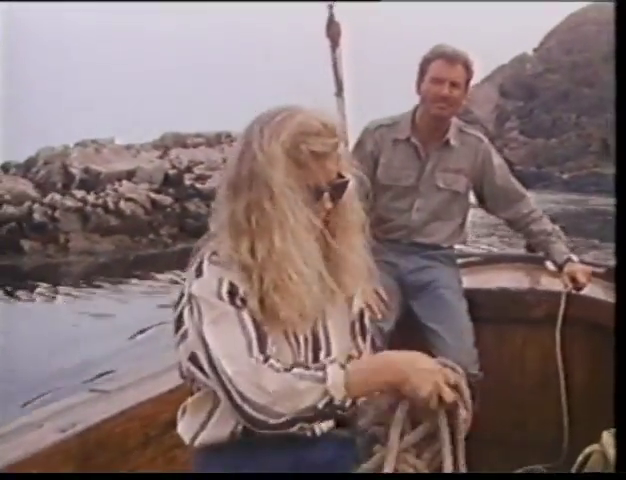
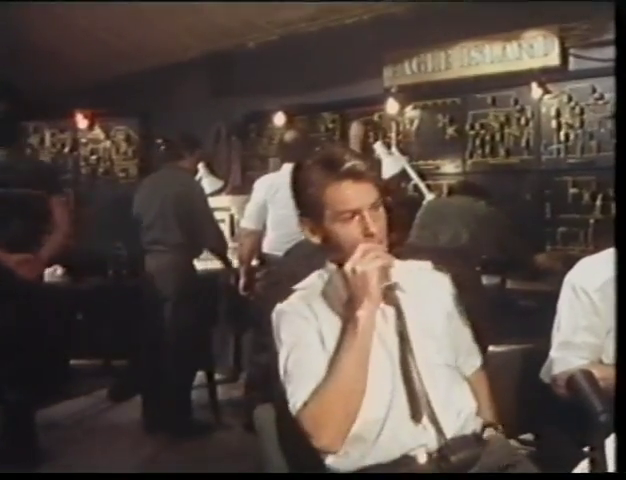
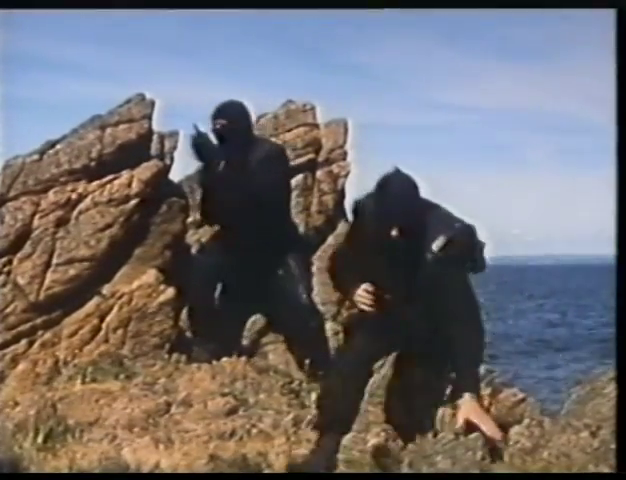
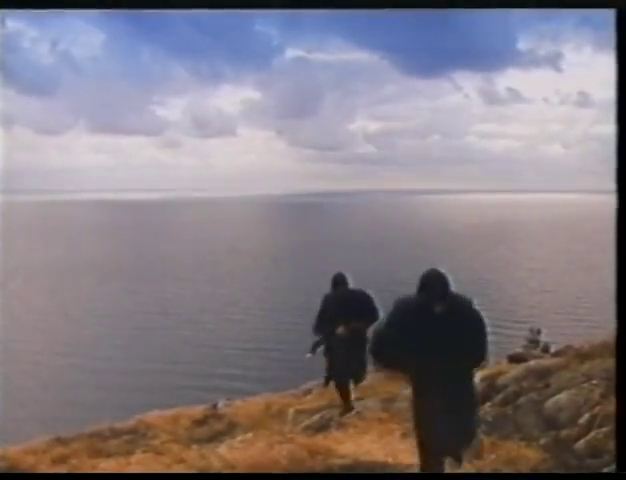
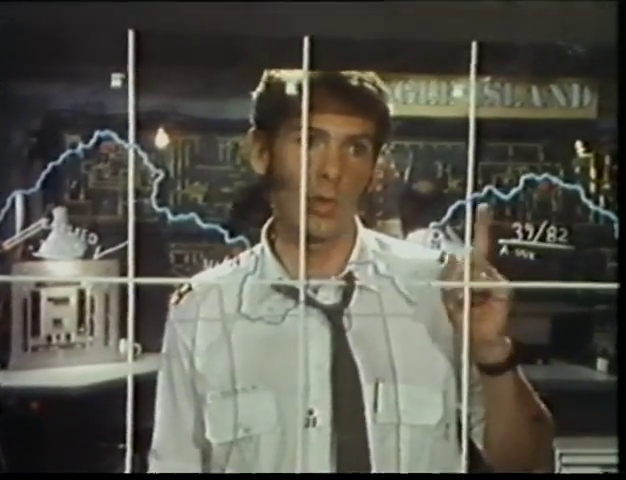
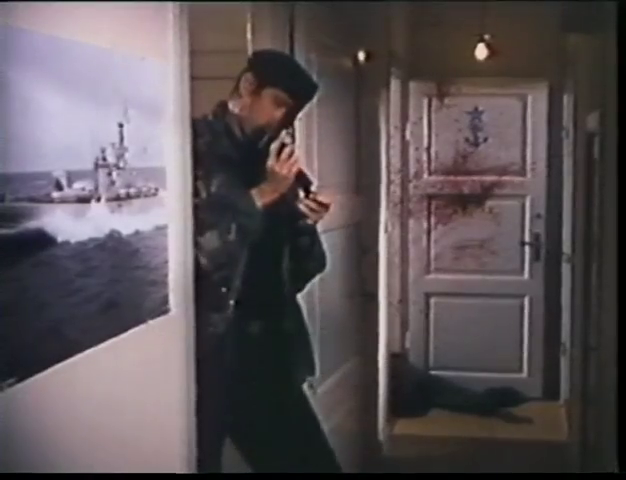
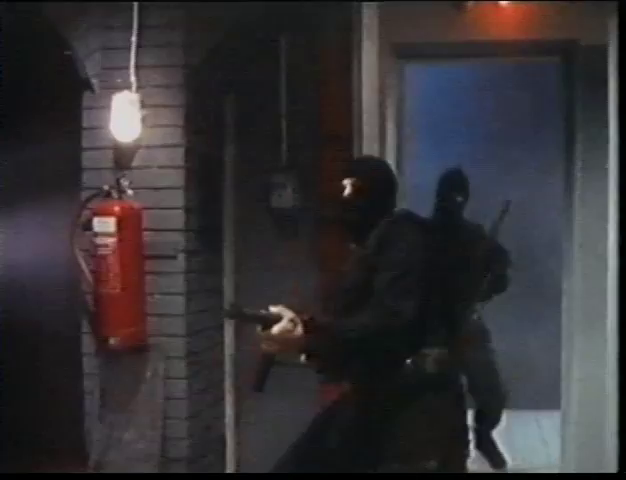
Eagle Island (1986)
Film review #576
Director: Mats Helge
SYNOPSIS: A military installation in Sweden comes under attack by Russian special forces ninjas. The soldiers on the island attempt to fend them off from obtaining a secret code.
THOUGHTS/ANALYSIS: Eagle Island is a 1986 action film. Set on Eagle Island (unsurprisingly) somewhere near Sweden, a military installation comes under attack from a group of Russian special forces who might also be ninjas, looking for a secret code, and the inhabitants must fend off the attackers. There’s not much else to say about the story: it is both completely devoid of any substance, and overly convoluted with additional characters that serve no purpose. The main thread of the story (apart from the Russian ninjas) is a guard on the island who has to escort a woman trespassing on the island to take photos of the eagles that give the island its name back to the mainland. The two inexplicably fall in love and get together, and when they learn about the Russian ninjas, they decide to go back to the island to stop them or something. It sounds like a premise which might be interesting, but there is so little that actually happens in the film you’ll be horrendously bored and disappointed that the film doesn’t match the premise.
Probably the most disappointing aspect is that the “ninjas” aren’t really ninjas at all, and just use weapons. Obviously the film wanted to capitalise on the ninja trend, but without wanting to do the choreography and stunts for it. The action is just the occasional gunfight, and as mentioned the story is all over the place and fails to establish any of the characters in any real depth. The most notable aspect of the film and it’s only real saving point is the soundtrack: it is the most eighties soundtrack you can ever imagine, and the synths and beat goes hard. It’s actually not a bad soundtrack either, but it is wholly misplaced in this film, and just adds to the sense of confusion experienced while watching. Overall, Eagle Island is a mess that is devoid of any real story, its characters have no personality or development, and the soundtrack is just so out of place it’s difficult to comprehend it. You don’t need to let you curiosity get the better of you with this one: there’s really nothing of value here.
-
#551 – Three Supermen in Santo Domingo (1986)
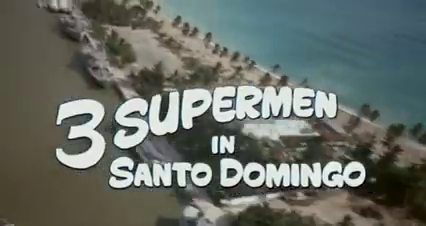
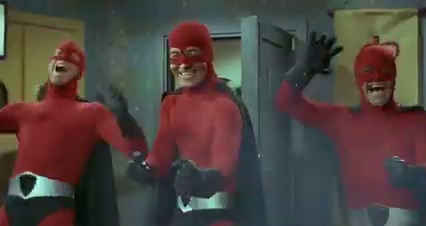
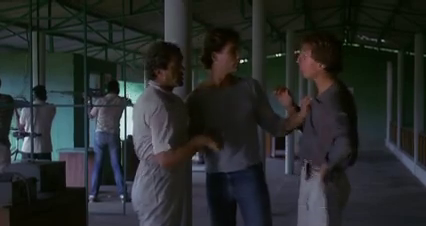
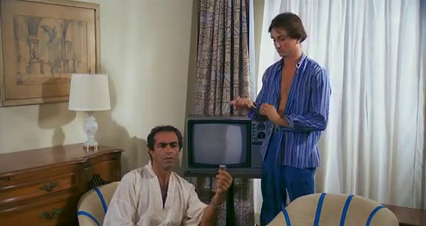
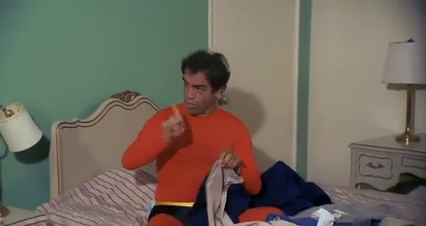
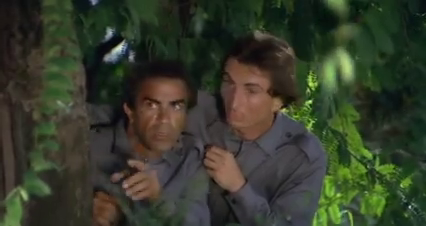
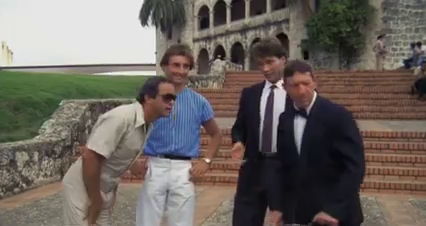
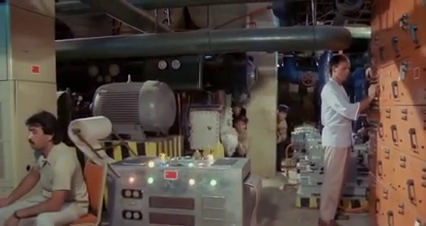
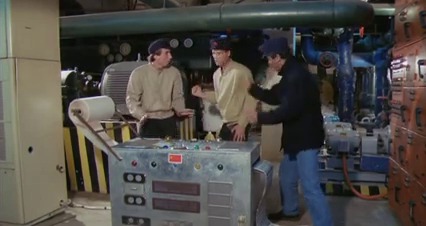
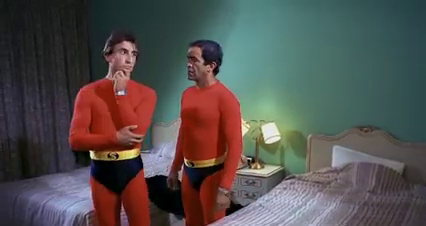
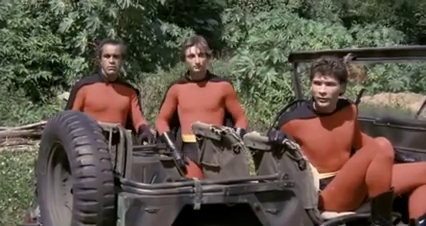
Three Supermen in Santo Domingo (1986)
Film review #551
Director: Italo Martinenghi
SYNOPSIS: FBI agent Brad Scott is once again required to team up with the international thieves known as “The Supermen,” this time they travel to Santo Domingo in South America to disrupt a money counterfeiting operation by some local crime gangs.
THOUGHTS/ANALYSIS: Three Supermen in Santo Domingo is a 1986 film and the final instalment in the Three Supermen series of films. The plot is fairly typical and familiar to those who have watched any of the other films: an FBI agent has to team up with the international thieves known as “The Supermen,” this time travelling to Santo Domingo to stop a counterfeiting operation run by a local gang. There’s no time travelling or outlandish elements in this film; it’s just a simple crimefighting, slapstick bit of fun, although obviously the supermen still have their bulletproof suits, that villains never quite work out that they could just shoot them in their uncovered heads. There’s a variety of action scenes (which consist of a fair amount of speeding up and reversing footage instead of actual stunts), and setups involving disguises, and elaborate plans, but nothing too exciting.
As always, the film revolves around the three supermen, and once again, they are played by different actors; all with the exception of one, Sal Borgese, who has been playing the mute superman since the second film (in the ones which you could consider “canon” anyway). The names of the characters also change quite a lot, and this time it seems like they’ve just resorted to calling Sal’s character Sal. The other two actors change every film, and this time the change is quite apparent, as they are obviously a lot younger than Sal. One of them is Stefano Martinenghi, who is the son of the director, and clearly only got the role because of this: he doesn’t really fit the role of the charming, cheeky lead. The actor playing the role of FBI agent Brad Scott also doesn’t really work because he seems way too young, and typically the role goes to someone who is older and more straight-laced, to balance with the supermen’s goofiness. There are glimmers of that personality, but not much. The rest of the cast aren’t really worth mentioning, as the villains don’t really stand out, and the supporting cast barely exist on screen.
It’s perhaps worth mentioning at this point that this film series has been going on for nearly twenty years at the time this film was made; and there is no reason for it to have done so. The original was a cheap b-movie that spoofed sci-fi and spy films that were popular in 1967, but had a somewhat interesting twist by having professional acrobats play the lead roles, which led to some fun action scenes and well-choregraphed fights. The first film, while nothing more than a typical b-movie, did everything it really needed to, but for some reason it became a series that went on to satirise other types of films, such as Westerns, cold war plots, martial arts films, and even got a Turkish rip-off version…which further still, somewhat fused with the Turkish rip-off scene when production of the films moved to Turkey. The whole production of this series is all over the place, but I suppose credit should be given to the films somewhat adapting to changing to cultural trends. Three Supermen in Santo Domingo doesn’t really offer anything special in this regard though, and while it keeps things simple, it definitely feels like a format that is well past its sell-by date in 1986, and since this is the final film in the series, the makers probably knew this too. Definitely deserves credit for going for twenty years, but its last hurrah is uneventful.
-
#519 – Rawhead Rex (1986)
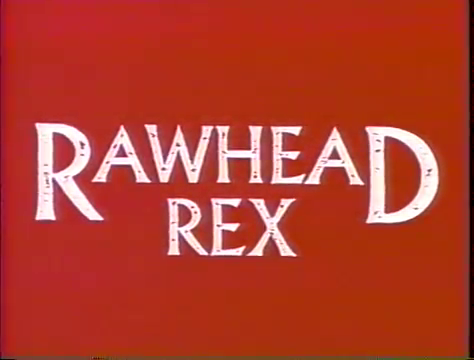
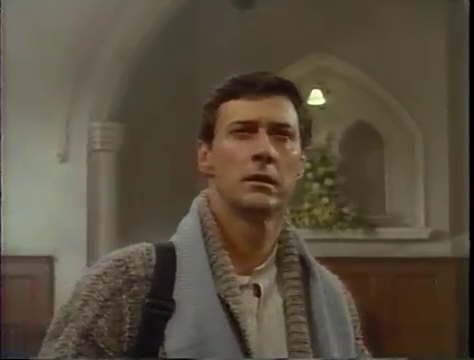
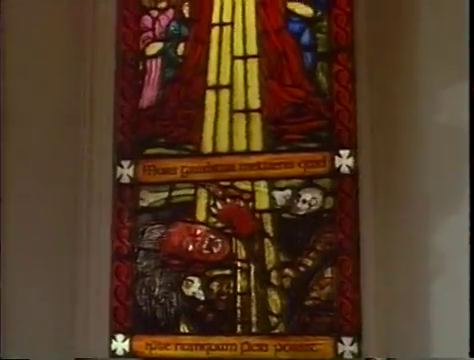
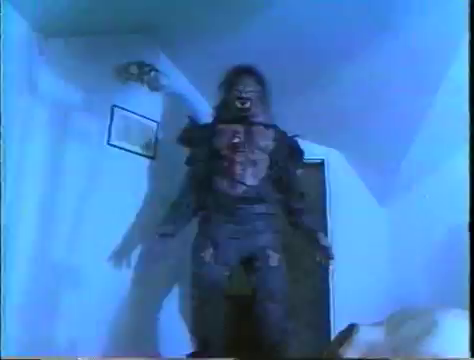
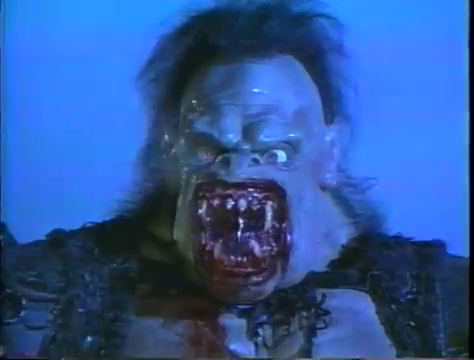
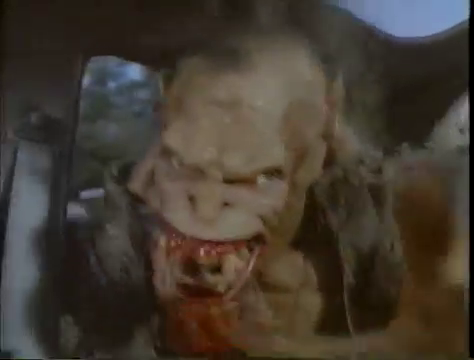
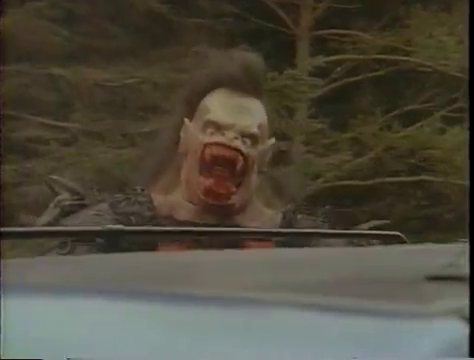
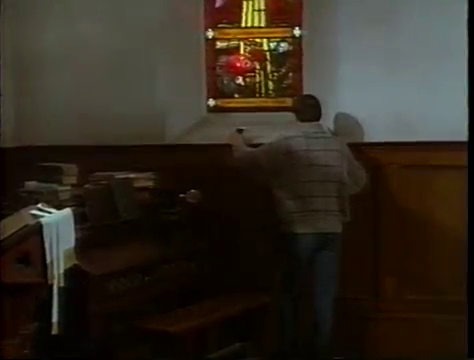
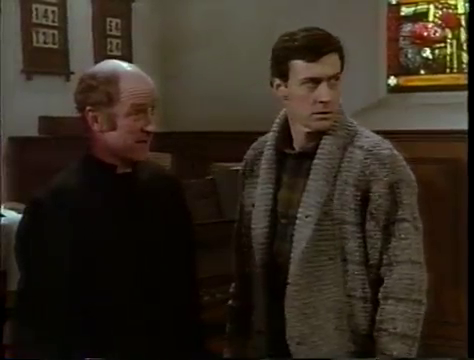
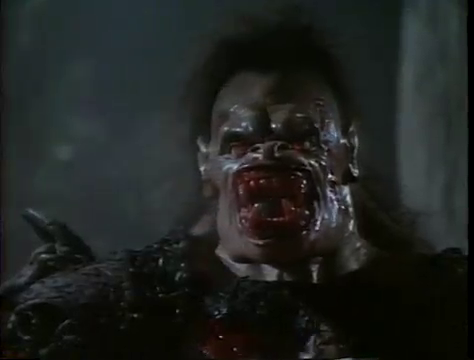
Rawhead Rex (1986)
Film review #519
Director: George Pavlou
SYNOPSIS: Howard Hallenbeck has taken his family on a trip to rural Ireland to do some research for a new book about the pagan deities of the area. Unfortunately, while he is there, the very kind of monster he is researching is released from it’s prison, and goes on a murderous killing spree. It becomes a race against time to stop the monster before everyone in the small town is slaughtered…
THOUGHTS/ANALYSIS: Rawhead Rex is a 1986 horror film, based on the short story of the same name by Clive Barker. The story centres around Howard Hallenbeck, who is visiting a rural town in Ireland with his wife and two children to research ancient folklore there for a new book he is writing. If this sounds like the opening plot to countless horror films, then you are spot on. you can also extend this to the rest of the film, as the whole experience feels very familiar and formulaic. Basically, an ancient demon is released from it’s prison and starts killing people in the village, leaving the authorities and the main cast to figure out what is going on. The plot unfolds very predictably: the monster kills, the cast try and figure out what goes on, and there’s very few surprises. Most of the kills are characters that haven’t been established or introduced properly, so there’s little investment in what happens to them. The lore behind the monster is never gone into in any real detail, and the occasional bit of gore and one brief bit of nudity just don’t leave any impact, nor do they escalate or build towards anything. The film feels like it has the fundamental building blocks, but never builds upo0n them, nor draws them together.
The monster, Rawhead, is based on a fictitious monster of the same name, but apart from said name, there doesn’t seem to be any real connection between the two. As mentioned, there could have been a lot more done with building the lore and have it impact the plot, but it essentially boils down to a mixture of paganism vs Christianity that offers little insight into either. Rawhead’s design is probably the thing that will ultimately make a viewer not take this film seriously: it is a pretty silly rubber mask which no real prosthetics or moving parts, and it never seems convincing. It also never seems too threatening either, since no one ever really has a chance to fight it, and just surprises people who can’t fight back, so we can’t really gauge it’s strength and ferocity. This is also true in the ending, in which the monster is simply resealed by a stone…thing, and the big twist is that a woman needed to use it (?), resulting in a climax which is just a bunch of CG chain things flying about and slowly imprisoning the monster. Again, there’s no real face off with the monster, so we don’t get a sense of it’s power and why we should fear it.
Other than the bare plot and monster design, the acting is for the most part fine, but there are a number of slip-ups, particularly with the accents, which you will undoubtedly notice at least once or twice. Apart from that, everything else is fine, just bland and unoriginal. Clive Barker, the writer of the original short story and the screenplay version, did not like the outcome of the film (unsurprisingly), and so took more control over the next film he wrote: which was the very successful Hellraiser. If you’re interested in Barker’s filmography, maybe you could give this a watch, but it has no other distinguishing features to mention.